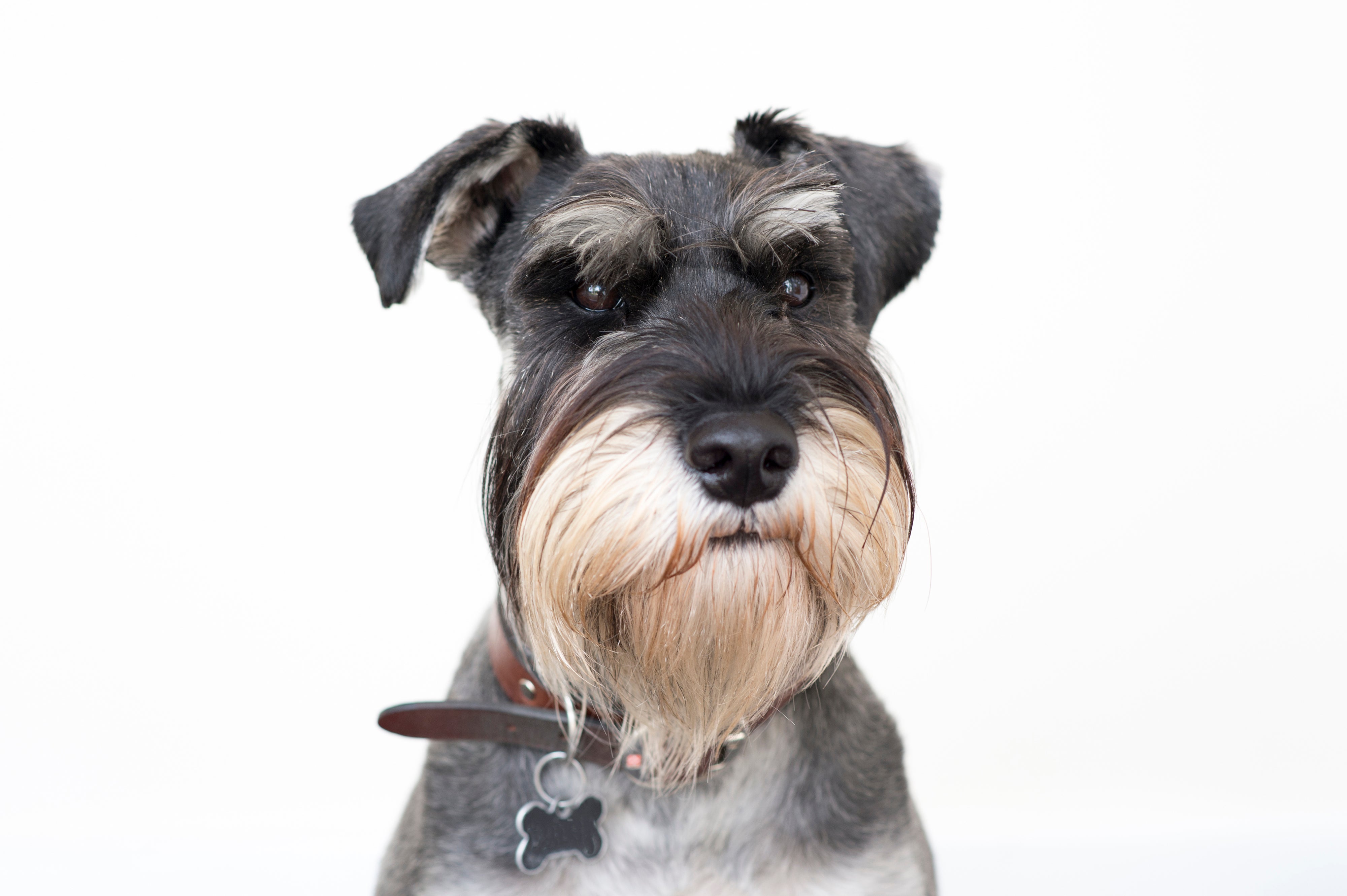Standard Schnauzer
Strong and robust, the Standard Schnauzer is the oldest of the three Schnauzer breeds. They are agile and powerful. Their coat is hard, wiry, and thick and is usually black or salt and pepper, giving them a distinguished look. Signature whiskers, mustaches, and eyebrows give them a wizened look.
Breed characteristics carousel
Learn More
Need to Know
- Dog suitable for owners with some experience
- Extra training required
- Generally healthy breed
- Enjoys active walks
- Medium dog
- Some drool
- Requires frequent grooming
- Chatty and vocal dog
- Barks, alerts, and may be physically protective/suspicious of visitors
- Could have issues with unknown dogs but gets along with known dogs
- May need additional training to live with other pets
- May need additional supervision to live with children
- Needs a large yard, in suburban or rural areas
- Can be left alone occasionally with training
- AKC Registered Breed

Personality
Fun-loving and smart, the Standard Schnauzer dog is a bold one. They are whip-smart but can also be stubborn. If their needs aren’t met, they can be mischievous, making their own fun. Patience, structure, and a gentle hand with lots of positive reinforcement are what a Standard Schnauzer needs to be successful at training. Devoted to their families, they do best with older children as they have high stimulation needs.
The oldest of the three Schnauzer breeds, the Standard Schnauzer might date back to the 14th century. They were household pets and companions for hunting as they were a formidable combination of terrier, working, and hunting breeds. They were likely the result of breeding wiry Pinschers with German Poodles and Spitz-like dogs to produce rodent chasers that doubled as watchdogs. By the 20th century, they had gained popularity as farm dogs, guarding farm carts at markets. By the turn of the 20th century, Standard Schnauzers could be found in the U.S. Their watchfulness and intelligence saw them serve in World War I and II.
If you love an expressive dog that’s low maintenance and loves training, the Standard Schnauzer might be for you. They enjoy staying active and being with their owners. While good with children, older children are a better fit because the dogs do take up a considerable amount of time and effort, which might not be possible with small children.
Standard Schnauzer dogs are active and enjoy being with their owners. Long walks, games, training, and interactive toys will keep their minds and bodies in good shape. They will want to be involved in family activities.
The Standard Schnauzer breed is medium-sized and will appreciate a decent-sized yard. Their watchdog instincts make it hard for them to live in more urban areas where they might be alerting owners to things too frequently. The suburbs or country is best for them.
Distinguished looking, the Standard Schnauzer’s coat is harsh and wiry. It can be black or salt and pepper and needs a good groom frequently to keep it in tip-top shape. Visiting a groomer with experience in wirehaired coats is a good idea to keep them neat and tidy.
Standard Schnauzers have opinions—and will let you know them, often noisily. Training will be needed to curb excessive barking and help the dog settle. They thrive on having a job to do, so dog sports and activities like fetch are a good fit for them. Smart, clever, and quick learners, they can learn bad habits just as quickly as good ones, so consistent reward-based training is best for them. A reliable recall is a good skill for them to work on.
If your family is outdoorsy and active, the Standard Schnauzer can be a good family dog. They are good with children, especially older ones.
The cost of a Standard Schnauzer from a breeder is significantly more than the cost of adopting one from a local shelter or rescue. The adoption fee usually covers additional items such as spaying or neutering, vaccines, and microchipping.

Learn more about feeding and caring for your Standard Schnauzer on Purina.
Did You Know?
- Schnauzers come in three sizes: Standard, Giant, and Miniature.
